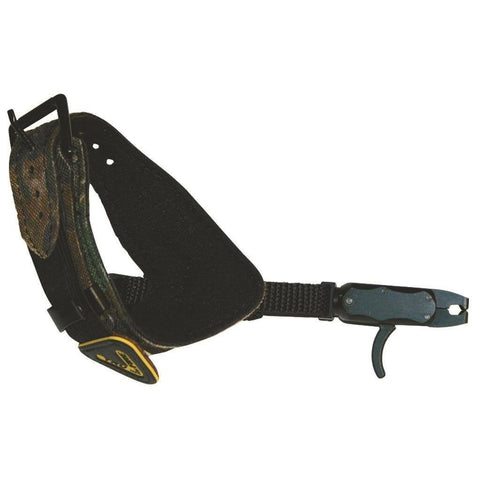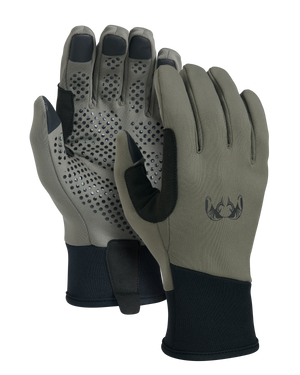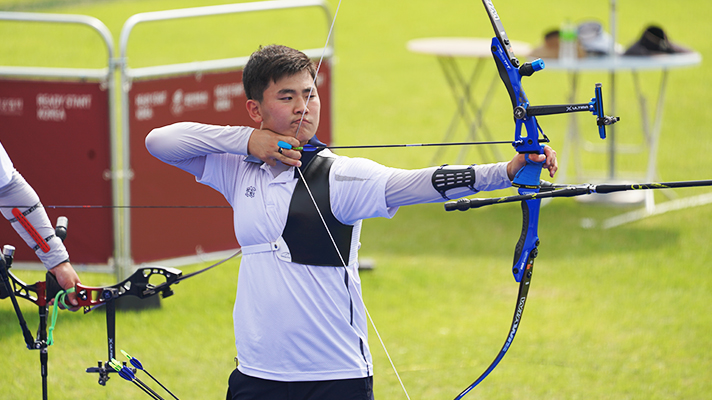
Knowing how to spot trophy buck antelope is a must before you set out on your hunt. Knowing where the best places to search for tracks is crucial. They are often found in muddy terrain. These can be found along fields edges or alongside streams. Simply follow the tracks of a bigbuck and you will find it. If you live in colder climates, it is best to hunt for bucks during winter when snow and ice both are common.
Identifying Buck Runways
Three methods are used to identify buck runways. One way to identify buck runways is to watch buck licking and rub in the open. The buck can rub its antlers on trees, brush, and make ground scrapes. It will also deposit urine with a distinctive smell. This second method is used to find large scrapes within dense cover, such a forest or field. These methods might not work in every area.
Identifying deer beds
It is crucial to recognize deer beds in order to maximize your hunting chances. Bucks will often use similar areas to make beds. Bucks require plenty of cover, good line of sight, wind, and some sun. Good mapping services can help you locate buckspots. This tip might be particularly useful if there are large properties. It is possible to make big money by using GPS to locate deer locations.

Identifying Buck beds
The most important part of any deer hunting strategy, is the ability to recognize buck bedding zones. Bucks are not accustomed to sleeping in the exact same spot every night. They prefer a certain area over another. This is why a top-quality map service is so useful. A topographical map depicts the contour lines and ridges of the area. This information will allow you to estimate the likely location of bucks' bedding in the near future.
Identifying deer runways
If you want to locate big bucks, learn to identify deer runways. These runways are easy to spot in the fall and summer months. A deer runway is usually characterized by flattened vegetation and upturned foliage. Deer use the deer runways throughout all seasons. Once you have identified the runway, choose a location that provides good coverage and good shots. If you have difficulty finding a runway suitable for deer, you can use traditional methods.
Spot a doe in heat
When hunting big bucks, it can be extremely helpful to spot a doe in heat. Bucks spend most of the rut scent-checking scrapes and cruising to locate does in heat. Do not hunt in these areas unless you are looking for doe scouts. If a buck is following you, you will have to wait until the buck moves on to another location to get a better shot. If you're fortunate, he may come to you.
Finding a doe in heat
It is important that you understand how bucks react to mating season. Bucks that rarely see does are not likely to let their reproductive urges control their behavior during mating season, which makes finding a doe in heat all the more crucial. Although the buck will follow the doe through the forest, his vulnerability during the rut can be greater than that of the doe. A buck not ready to mat may just decide to leave the area or simply strut in to it.

Identifying the buck bed
Finding the bed of buck is the first step to identify it. Bucks are known to frequent low flats that are one-quarter acre or smaller. Although this type of buck bedding area may not be at the lowest elevation, it is often located in the lower parts of a draw. Low flats are located away form high-traffic areas (e.g. doe bedding) and from hotspots of hunting pressure.
FAQ
How much training is required to become a hunter. What is the average time it takes?
A basic course is required to learn how hunt. This course teaches about different game species and provides information about hunting laws.
You will be taught how to safely handle ammunition and firearms. Instructions will also be provided on how to safely use these weapons.
This course lasts anywhere from two weeks to three months. Some courses can only be taken online. Some courses are offered online. Others can be taken in person.
You must pass a written exam to be eligible for a license. You may also need to show that you have completed a hunter education course.
How much does it cost to get licensed? What if I don't have enough money?
The cost to get licensed depends on where you live. It ranges from $20 to over $100.
You might be eligible to apply for a loan/grant if you don’t have enough money.
In addition to the fee, you will need to purchase a tag. Prices for tags vary depending on what type of game you hunt.
There are tags available for bear, elk and moose as well as waterfowl, upland birds and furbearers, such as foxes.
Some states require registration with the Department of Natural Resources to be eligible for a license.
Before you go out hunting, make sure you check all local regulations.
Can I bring my dog?
In most states, dogs cannot be hunted together. Some states, however, allow this practice. To find out if it is permitted in your state, check with the department of natural resources.
Some hunters also bring their pets along. Some hunters believe having a pet helps them relax while hunting. Others say that having a companion makes them less likely to get lost.
However, pets can be a problem. Dogs tend to chase animals away from the hunter. Also, wild animals may attack the pet.
What types of guns can be legally used?
There are many types of hunting weapons that you can use.
Hunting rifles, shotguns and handguns are the most common weapons used by hunters.
Rifles are designed to fire bullets from long distances. Shotguns are often loaded with pellets. Handguns are made to fire bullets through your hand. Muzzle-loading firearms work in the same manner as modern-day pistols.
Crossbows are used for shooting arrows. Archery weapons are also known as bowhunters.
Special training is required to hunt with a crossbow. The first step is to master the art of shooting and aiming the weapon.
Is hunting dangerous?
Yes, it is possible to get hurt while hunting.
There are many ways to injure your self.
Poor shooting techniques can be one of the reasons. You might shoot from the wrong angle, or miss the right part of an animal.
A second risk is that another animal may attack you.
Every year, there are many hunting accidents. Many people are injured or killed by their guns every year.
Hunters are advised to keep their guns loaded until they reach their destination.
They should also make sure their guns are not loaded when they go into the woods.
Keep your eyes open. Be aware of where you step and listen to the sounds around you.
Do not approach any animals unless you are prepared to defend yourself.
Never chase after prey. Instead, wait patiently for them to come to you.
Don't take shortcuts. They could lead to injury and death.
Avoid cliffs or other areas where you can't see the bottom.
Avoid streams and rivers. These places may flood unexpectedly.
Avoid drinking alcohol while you are hunting. You will have a slower reaction time due to alcohol.
Keep all safety equipment close to you. Always keep a flashlight and a first aid kit close by.
Knowing how to respond to an emergency is crucial. Do not attempt to administer CPR if you don't know how.
Statistics
- - Percent of residents with paid hunting licenses: 0.7%- (stacker.com)
- Licenses dropped from a peak of roughly 17 million in the 1980s to 15 million in 2019, according to The Seattle Times. (stacker.com)
- - Percent of residents with paid hunting licenses: 0.7%- (stacker.com)
- In less than 20 years, Rhode Island saw a 40% drop in the number of hunting licenses for residents, according to The Valley Breeze. (stacker.com)
External Links
How To
How to hunt wild hogs
Large animals, wild hogs can be found across North America, Africa and Asia. Wild hogs eat both vegetation and small animals, such as birds, fish, mice, rabbits and mice. They usually feed at night. The gestation period is approximately six months. One piglet then emerges. A sow can give birth once every two years. Wild hogs are often solitary but can live in groups known as herds.
Wild boars typically weigh around 200 pounds (90kg). Their head length averages from 10 to 12 inches (25-30 cm), while their body length ranges from 20 to 30 inches (50-75 cm). Wild pigs have long legs with broad shoulders and short tails. Their skin is covered with a thick layer fat.
They are very sensitive to smell, hearing, sight, and touch. They use their senses to identify danger and find food. They can run upto 35 mph (56 km/h) at speeds of up to 14 mph and jump upto 15 feet (4 m) from a distance of just under 4 m. They have sharp teeth and claws. They are aggressive when protecting themselves against predators.
Hunting wild hogs is difficult due to their intelligence, speed, and elusive nature. Hunting wild hogs requires careful observation. The animal may flee if hunters take too long to kill it. Hunters who shoot too soon can kill the animal before it reaches cover.
Wild hogs can be killed using many hunting methods. The most commonly used method is shooting. This requires hunters to track down the animal and then wait until it comes into range. Another option is trapping. Trapping is the practice of placing traps in areas where the hogs are likely to drink. A trap may contain a scent lure such as peanut butter and corn meal. When the trap is sprung, the hunter shoots the trapped pig.
Snaring is another option. Snaring uses a noose made out of rope to catch the pig. It is best to catch the pig during its mating season.
Other methods include poisoning, spearing and netting. To stop pigs from breathing, spearing and netting involve putting a spear or net through the neck of the animal. Poisoning is when the poison is injected into the pig's throat.
Hunters who wish to hunt wild hogs need to be prepared for the cold weather. For warmth, hunters may need to wear snowshoes in certain areas. Hunting dogs can help hunters track their animals.